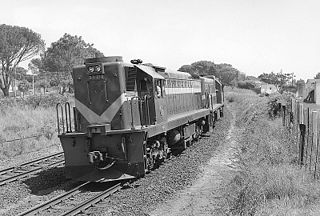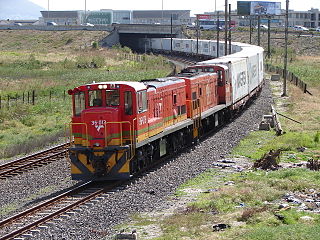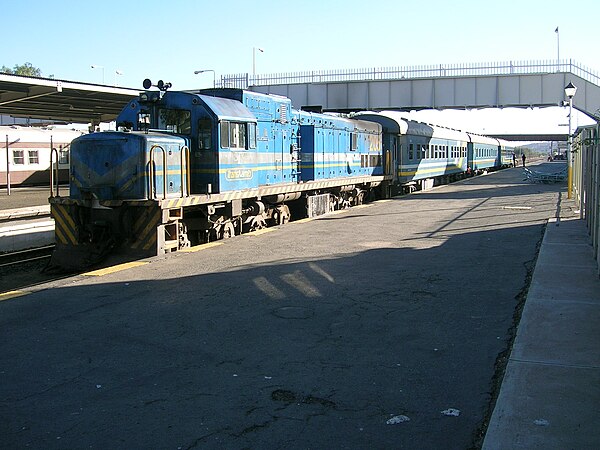
Co-Co is the wheel arrangement for diesel and electric locomotives with two six-wheeled bogies with all axles powered, with a separate traction motor per axle. The equivalent UIC classification (Europe) for this arrangement is Co′Co′, or C-C for AAR.

The South African Railways Class NG15 2-8-2 is a class of narrow-gauge steam locomotives.

The South African Railways Class 91-000 of 1973 was a narrow-gauge diesel–electric locomotive.

The South African Railways Class 31-000 of 1958 was a diesel-electric locomotive.

The South African Railways Class 32-000 of 1959 was a diesel-electric locomotive.

The South African Railways Class 33-000 of 1965 was a diesel-electric locomotive.

The South African Railways Class 33-200 of 1966 was a diesel-electric locomotive.

The South African Railways Class 33-400 of 1968 was a South African and Namibian diesel-electric locomotive.

The South African Railways Class 34-000 of 1971 is a diesel-electric locomotive.

The South African Railways Class 34-400 of 1973 is a diesel-electric locomotive.

The South African Railways Class 34-500 of 1974 is a diesel-electric locomotive.

The South African Railways Class 34–900 of 1980 is a diesel-electric locomotive.

The South African Railways Class 35-000 of 1972 is a diesel-electric locomotive.

The South African Railways Class 35-200 of 1974 is a diesel-electric locomotive.

The South African Railways Class 35-400 of 1976 is a diesel-electric locomotive.

The South African Railways Class 36-000 is a diesel-electric locomotive.

The South African Railways Class 61-000 of 1959 was a diesel-hydraulic locomotive.

The South African Railways Class 36-200 of 1980 is a diesel-electric locomotive.

The GE U26C diesel locomotive model was introduced by GE Transportation Systems in 1971. All examples of this model are six axle units, and have the wheel arrangement C-C or Co'Co'.

Under the British and Imperial classification scheme of locomotive axle arrangements 1Co+Co1 is a classification code for a locomotive wheel arrangement of two eight-wheeled bogies with an articulated inter-bogie connection, each with three axles powered by a separate traction motor per axle and with the fourth non-powered axle in an integral leading pony truck to reduce the axle load. The similar 1Co-Co1 classification is in the same axle configuration, but without the inter-bogie connection.






















